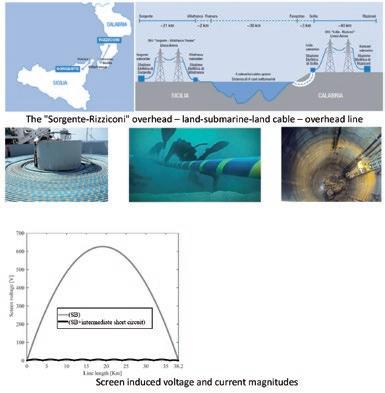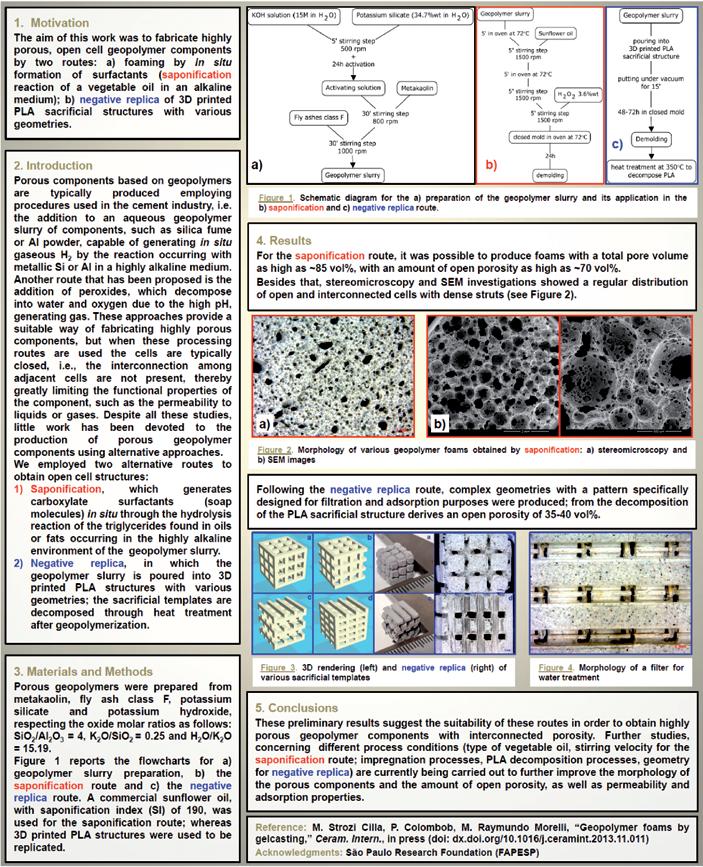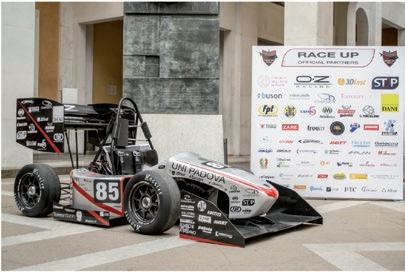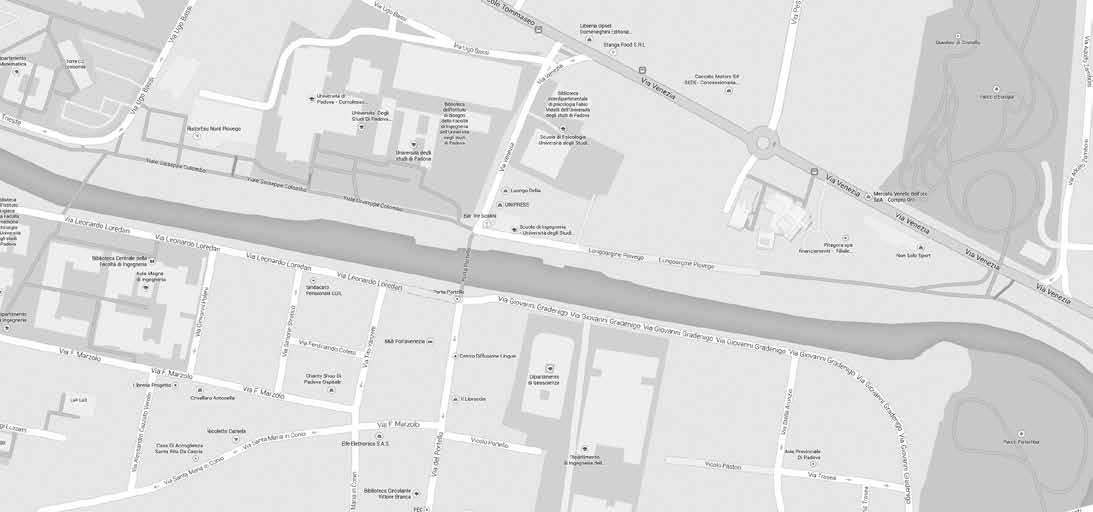
5 minute read
Achievements
Ingegneria dei sistemi elettrici Electric systems
DII research group Power System Group
Advertisement
01
Roberto Benato roberto.benato@unipd.it 049827732
Assisted by Sebastian Dambone Sessa, PhD student
www.dii.unipd.it/en/power-system-group
Dr. Riccardo De Zan, Dr. Maria Rosaria Guarniere, Dr. Paolo Sylos Labini and Dr. Giuseppe Lavecchia with Terna Rete Italia, Rome.
Main research topics: • Smart grids: the operation and control of active networks. • Voltage regulation in the distribution network with high penetration of distributed generation • Large-scale energy storage in the network • EHV/HV dc and ac innovative transmission lines
e.g. insulated cables and gas insulated lines; • Synergy between railway and highway infrastructures and insulated cables • Multiconductor cell analysis (MCA) of asymmetric systems by means of self-implemented matrix procedures (insulated cables with screens and armours, gas insulated lines with enclosures, overhead lines with one or more earth wires)
Sorgente-Rizziconi (Sicily-Calabria) 43 km Double-Circuit AC 380 kV Submarine-Land Cables
e Power System Group has investigated and deeply contributed in the analysis and in the planning choices of the future extra-high voltage (EHV) double-circuit cable line between Sicily and Calabria which is a reinforcement of the Italian southern transmission grid. is will be one of the longest AC submarine link in the world. e multiconductor cell analysis (with acronym MCA: software devised and entirely developed by the Group) of these land-submarine double-circuit single-core cables has been compared with an Electro Magnetic Transient Program (EMTP-RV) model with a very good agreement. e different choices of bonding systems implemented in the real Italian installation have been theoretically justified by means of the two software comparison. It is worth remembering that the first link between Sicily and Italy mainland is dated 1955 and was a 220 kV double-circuit overhead line with a crossing span of 3.65 km. In 1981 these overhead lines were dismantled and substituted by a very challenging submarine 400 kV single-circuit cable installation in the difficult environmental conditions of the Messina Strait. More recently, the necessity of substituting this submarine oil-filled cable link and of strengthening the Italian southern EHV grid have brought to the planning and installation of a very long AC double-circuit single-core cable line chiefly constituted of a submarine armoured cable system (38 km long) and of two land parts (wholly about 5 km long) in Sicily and in Calabria Regions. is link with different cable types presents both the most important bondings of cable screens i.e. solid-bonding and crossbonding. In the submarine part, the cable is armoured and the screen and armour of each single-core cable are bonded together every 4 km. At both ends of the submarine part, all the screens and armours are solid-bonded. e land part is cross-bonded in order to have negligible induced currents in the screens. erefore, in the submarine part, only solid-bonding is possible: this implies induced currents and voltages in the screens and armours which have been computed. e Group has also demonstrated that in order to keep the screen induced voltages sufficiently low it is necessary to bond them together with armours at given intervals along the submarine part: the evaluation of this length interval has been given by means of MCA. e Group has also clearly shown that the stray current in the sea is practically negligible and the additional losses of solid-bonding armours are very low so giving a very environmental-friendly installation
From left: Cable drum in the cable laying ship Giulio Verne; an installation phase of the submarine laying; an impressive view into the vertical tunnel
Novel routes for open cell geopolymer components
G. Franchin1, P. Colombo1, M. Strozi Cilla2 1 Dipartimento di Ingegneria Industriale, Università di Padova - 2 Federal University of Sao Carlos, Brazil

Achievements
01
www.raceup.it/
Il Team Red Bull al Dipartimento di Ingegneria Industriale
Il 22 aprile 2015 alle ore 16.15, il Team Toro Rosso/Red Bull di Formula 1 ha presentato agli studenti di ingegneria del Dipartimento di Ingegneria Industriale (DII) alcuni aspetti della propria attività tecnologico-sportiva, nell’ambito di un evento indirizzato particolarmente agli studenti dei corsi magistrali e triennali di ingegneria aerospaziale e ingegneria meccanica. Francesco Pancrazi (Senior Control Systems Engineer del Dipartimento Elettronico) ha tenuto una relazione sul tema "Controlli elettronici in una vettura di F1", con ottima partecipazione degli studenti (testimoniata dal rapido esaurimento dei posti disponibili). La conferenza è stata accompagnata dall’esposizione di un'auto della scuderia Toro Rosso nel cortile del DII in via Venezia 1.

RaceUP Team presenta MG X.15
Venerdì 3 luglio presso il Palazzo Bo è stata presentata alle Autorità Accademiche, agli Sponsor e alla Stampa la nuova vettura MG X.15 con la quale il RaceUP Team dell'Università di Padova parteciperà alle prossime competizioni internazionali del circuito Formula SAE, che si terranno presso il circuito di Hockenheim (Germania) nel mese di agosto e presso il circuito di Varano de' Melegari (Parma) nel mese di settembre.

DIPARTIMENTO DI INGEGNERIA INDUSTRIALE
Cover story
Analisi sperimentale della rottura delle fibre di rinforzo nella fase di plastificazione del processo di stampaggio ad iniezione
www.dii.unipd.it Il laboratorio di Polymer Processing del Precision Manufacturing Engineering Group è attivo nello studio dei processi per la fabbricazione, delle prestazioni meccaniche e funzionali dei prodotti in materiale polimerico. Si occupa di microstampaggio ad iniezione di componenti per applicazioni biomedicali e di stampaggio ad iniezione di materiali fibro-rinforzati. Le principali attività sono rivolte allo studio degli effetti della variazione rapida della temperatura stampo nella replicazione di cavità microlavorate e nanostrutturate, allo studio degli effetti del processo sulla rottura delle fibre di rinforzo e allo studio dello stampaggio ad iniezione di componenti ibridi a matrice termoplastica.
Ing. Ruggero Giusti
Nato a Rimini, il 01/08/1987. Dottorando in ingegneria industriale XXIX ciclo. Dopo aver conseguito la laurea triennale in ingegneria meccanica presso l’Università di Bologna, ha approfondito l’interesse per le tecnologie per la lavorazione dei materiali polimerici conseguendo in aprile 2013 la laurea magistrale in ingegneria meccanica presso l’Università di Padova. Ho iniziato nel 2014 la sua attività di ricerca presso il laboratorio Te.Si. di Rovigo come dottorando. I suoi interessi di ricerca riguardano principalmente l’analisi della resistenza della saldatura in componenti ibridi ottenuti mediante sovrastampaggio ad iniezione di laminati a matrice termoplastica e lo studio degli effetti del processo sulle proprietà del componente. P.S: La figura presentata è un mancato riconoscimento, da parte di un programma per l’analisi di immagini, delle fibre di rinforzo estratte dalla matrice polimerica. Tale immagine non ha una rilevanza scientifica ma è frutto di uno step intermedio che ha poi portato all’ottimizzazione del riconoscimento automatico della lunghezza in pixel dei frammenti di fibra.
SEDI
www.dii.unipd.it
Direttore: Andrea Stella
Vicedirettore: Stefania Bruschi
Segreteria amministrativa: Sandra Dal Bianco
DII
Dipartimento di Ingegneria Industriale, Università degli Studi di Padova

Sede legale e amministrativa Via Gradenigo, 6/a - 35131 Padova tel. +39 049 8277500 fax +39 049 8277599 segreteria@dii.unipd.it www.dii.unipd.it
Via Marzolo, 9 - 35131 Padova








